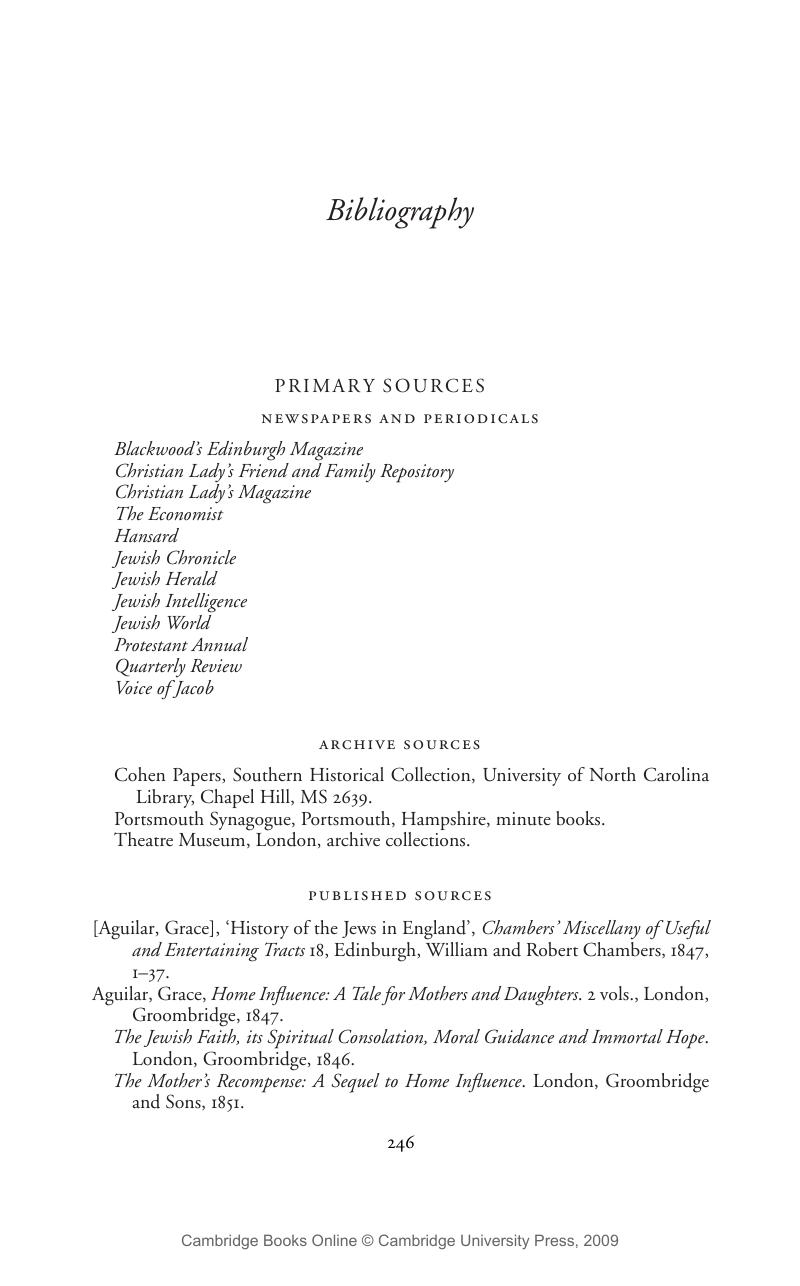Book contents
- Frontmatter
- Contents
- List of illustrations
- Acknowledgments
- 1 Introduction: the Jewess question
- 2 Repellent beauty: the liberal nation and the Jewess
- 3 Jewish persuasions: gender and the culture of conversion
- 4 Women of Israel: femininity, politics and Anglo-Jewish fiction
- 5 Hellenist heroines: commerce, culture and the Jewess
- 6 The shadow of the harem: fin-de-siècle racial romance
- 7 Conclusion: neither wild thing nor tame
- Notes
- Bibliography
- Index
- CAMBRIDGE STUDIES IN NINETEENTH-CENTURY LITERATURE AND CULTURE
- References
Bibliography
Published online by Cambridge University Press: 10 December 2009
- Frontmatter
- Contents
- List of illustrations
- Acknowledgments
- 1 Introduction: the Jewess question
- 2 Repellent beauty: the liberal nation and the Jewess
- 3 Jewish persuasions: gender and the culture of conversion
- 4 Women of Israel: femininity, politics and Anglo-Jewish fiction
- 5 Hellenist heroines: commerce, culture and the Jewess
- 6 The shadow of the harem: fin-de-siècle racial romance
- 7 Conclusion: neither wild thing nor tame
- Notes
- Bibliography
- Index
- CAMBRIDGE STUDIES IN NINETEENTH-CENTURY LITERATURE AND CULTURE
- References
Summary

- Type
- Chapter
- Information
- The Jewess in Nineteenth-Century British Literary Culture , pp. 246 - 263Publisher: Cambridge University PressPrint publication year: 2007



